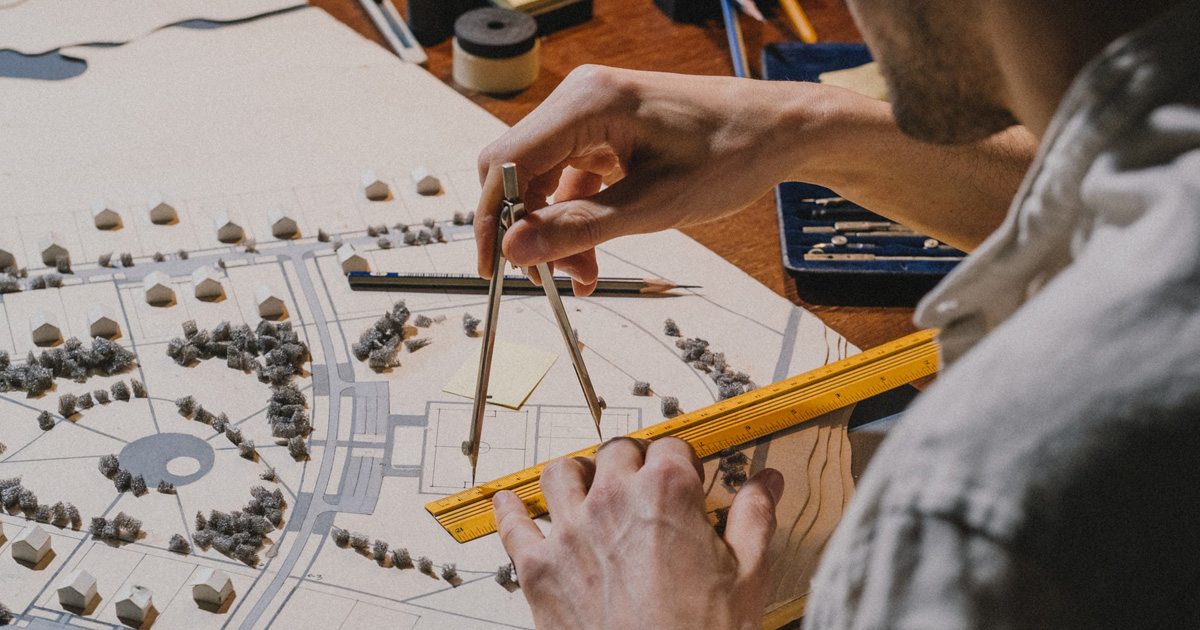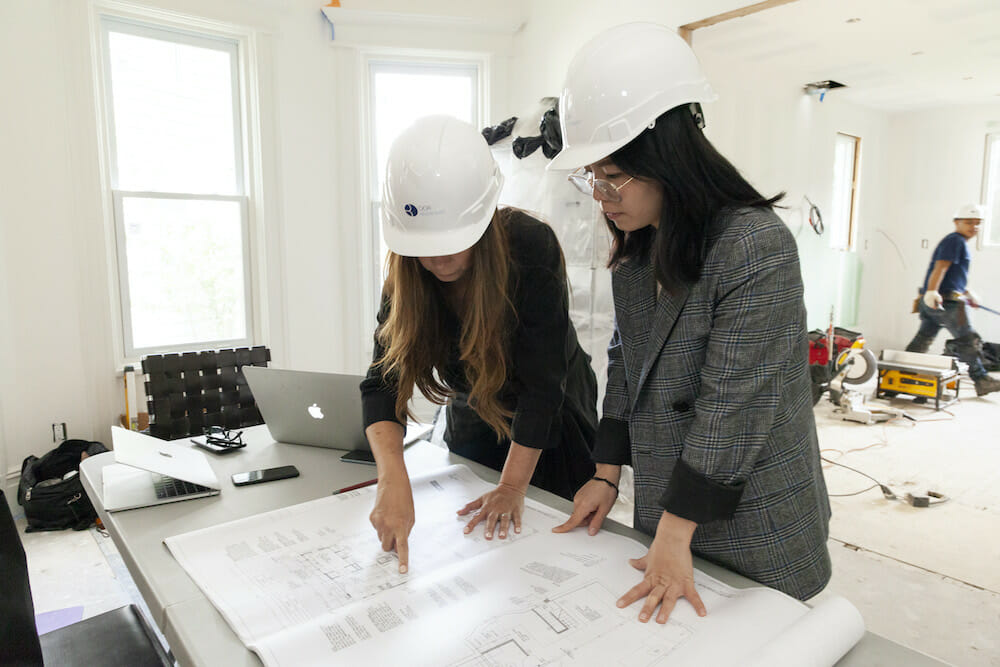Architect Rules for Designing Evergreen Interiors
Understanding the Diverse Job Paths Available for Aspiring Architect
As an ambitious Architect, you have a world of occupation courses waiting for you. Whether you're drawn to traditional design or the nuances of lasting style, there's a particular niche that lines up with your interests.
Traditional Style: Designing Buildings and Frameworks
Typical design focuses on developing buildings and structures that mix capability with visual allure. Your styles can show cultural heritage, showcasing neighborhood customs while fulfilling contemporary demands.
You'll establish skills in preparing, model-making, and website analysis, allowing you to imagine and communicate your concepts effectively. Engaging with customers, you'll require to understand their vision and convert it into feasible styles.
Moreover, developing codes and sustainability practices are vital in your work, guaranteeing your frameworks are ecologically friendly and risk-free. As you grow in your profession, you'll locate possibilities in household, business, or perhaps reconstruction tasks, each offering one-of-a-kind challenges. Welcoming standard design leads the way for a fulfilling occupation that admires the past while forming the future.
Urban Planning: Shaping Neighborhoods and Public Spaces
As a hopeful Architect, you can play a vital role as a city organizer, changing exactly how communities operate and communicate. By utilizing area engagement approaches, you'll assure that residents have a voice fit their atmosphere. And also, integrating lasting layout concepts will certainly aid create areas that not just fulfill today's requirements yet also safeguard the future.
Function of Urban Planners
While lots of could think of designers as the sole visionaries behind structures, metropolitan coordinators play a vital duty in forming the broader landscape of neighborhoods and public spaces. By collaborating with different stakeholders, you'll aid create parks, transportation systems, and household locations that promote social interaction and availability. Your experience in spatial style and community characteristics enables you to visualize future development while protecting cultural heritage.
Community Engagement Approaches
Reliable community involvement approaches are essential for urban organizers to assure that the voices of homeowners are listened to and valued in the planning procedure. To promote purposeful dialogue, you ought to focus on open forums and workshops where neighborhood participants can reveal their ideas and problems. Use surveys and social media to reach a more comprehensive target market, ensuring varied point of views are consisted of. Collaborating with neighborhood organizations can improve count on and help with deeper links. It's important to supply clear information concerning proposed jobs and decision-making processes, permitting citizens to feel enlightened and empowered. By proactively including and paying attention responses, you'll develop rooms that mirror the community's needs, eventually leading to more successful and lasting urban atmospheres. Accept openness and constant dialogue for long-term effect.
Lasting Style Principles
When making metropolitan spaces, including sustainable design principles is important for creating atmospheres that thrive both environmentally and socially. Take into consideration incorporating eco-friendly areas, like yards and parks, to enhance biodiversity and improve air quality.
Designing with water conservation in mind is likewise essential-- believe regarding rainfall yards and permeable surface areas to handle stormwater. Involving area participants throughout the planning procedure assurances that the areas you develop fulfill their demands and motivate social interaction. By accepting these principles, you'll add to vivid, sustainable city landscapes that benefit everybody.

Landscape Architecture: Producing Lasting Outside Atmospheres
As you check out landscape design, you'll find essential layout principles that develop useful and beautiful outside rooms. Lasting practices play a vital role in guaranteeing these atmospheres flourish while reducing environmental impact. Plus, you'll discover a variety of career possibilities that permit you to make a genuine distinction in how people connect with nature.
Layout Principles in Landscape
Comprehending style concepts in landscape architecture is important for producing lasting outside settings that balance with nature. You'll need to contemplate components like percentage, range, and balance to ensure your styles feel cohesive and welcoming. Integrating native plants not just enhances biodiversity however additionally reduces water usage, making your landscape durable. Think regarding the flow of space and exactly how people connect with it; paths and seating locations must welcome exploration and leisure. Furthermore, take note of seasonal adjustments, designing with products that enhance the surroundings year-round (Architect). By prioritizing sustainability and looks, you can create outside spaces that improve the neighborhood and promote wellness. Accepting these principles will set a solid structure for your profession in landscape design.
Sustainable Practices Summary
Lasting practices in landscape style not just focus on aesthetic appeals however also focus on ecological health and resource conservation. You can make areas that advertise dirt health, such as using natural products and exercising permaculture principles. Inevitably, these methods assure your styles benefit both individuals and the environment for years to come.
Occupation Opportunities Exploration
With a strong structure in lasting practices, landscape style uses a variety of profession paths that permit you to make a significant effect on the environment. You could function as a landscape designer, developing aesthetically pleasing and functional exterior spaces, or concentrate on ecological remediation, aiding to restore damaged environments. Urban planners typically collaborate with landscape architects to produce environment-friendly spaces in city settings, improving city livability. If you're passionate about education and learning, take into consideration becoming a landscape design instructor, motivating future generations. In addition, you might collaborate with nonprofits concentrated on ecological sustainability or participate in study to introduce brand-new practices. Each course not only shapes gorgeous environments but additionally fosters a healthier world for future generations.
Lasting Design: Concentrating On Eco-Friendly Practices
As you discover your career in architecture, embracing green techniques can establish you apart in an affordable field. Lasting style concentrates on creating buildings that decrease environmental influence while boosting occupant well-being. By including sustainable products, energy-efficient systems, and lasting structure strategies, you'll add to a greener future.
Start by gaining understanding of environment-friendly certifications like LEED or BREEAM, which can strengthen your qualifications. Think about how natural light, ventilation, and thermal efficiency can enhance layout. Work together with engineers and ecological professionals to innovate options that lower waste and conserve sources.
Don't fail to remember the importance of area participation-- interesting neighborhood stakeholders can motivate designs that integrate with the atmosphere. As customers significantly focus on sustainability, your experience in green practices will not only draw in jobs yet also fulfill your enthusiasm for accountable style. Welcome this vital aspect of the career, and see your career flourish.
Historic Preservation: Protecting and Bring Back Social Heritage
While you start on your building trip, consider the necessary role of historical conservation in keeping our social heritage. This field concentrates on the security and repair of substantial buildings, websites, and structures that inform the stories of our past. By participating in Get the facts historical conservation, you'll help guard the architectural heritage that forms area identification.
As a historic preservation Architect, you'll assess historical relevance and evaluate the problem of structures. You'll work very closely with chroniclers and guardians to guarantee authentic repair methods are used. This job path enables you to blend creativity with research study, enabling you to create remedies that value initial products and workmanship.
Your job not only adds to sustainability by recycling existing structures but additionally cultivates a feeling of pride within communities. Embracing this path will assist you become a guardian of background, maintaining the tales and looks that enrich our lives.
Interior Design: Enhancing Indoor Spaces
Historic conservation and interior style both share a commitment to enhancing the developed setting, yet they concentrate on different aspects. While historical preservation emphasizes maintaining a framework's social and historic worth, interior my site style absolutely nos in on optimizing interior areas for capability and aesthetic appeals.
As a hopeful Architect, you'll locate that interior architecture allows you to blend imagination with technical abilities. You'll design rooms that not only look great but also promote comfort and effectiveness. This field involves comprehending how light, shade, and materials communicate within a room, affecting state of mind and use.
You'll work on various jobs, from domestic homes to industrial offices, making certain that each setting fulfills the demands of its passengers. By prioritizing customer experience, you can change insides right into motivating and functional spaces, making a substantial influence on just how individuals communicate with their environments. Accept the chance to boost interior environments and shape the means individuals function and live.
Industrial Style: Merging Functionality With Appearances
Commercial style plays a vital function in developing products that seamlessly blend aesthetic appeals with capability, making sure that what you utilize everyday is not just visually appealing but also practical. As an aspiring Architect, you can involve on your own in this field, concentrating on designing everything from furnishings to consumer electronics. Your job entails comprehending customer needs, materials, and manufacturing processes, permitting you to create ingenious options that improve daily experiences.
In commercial design, you'll commonly collaborate with marketers, producers, and engineers, making certain that your layouts are not just stunning yet likewise viable. You'll find out to balance type and function, prioritizing usability without giving up design. By honing your skills in mapping out, 3D modeling, and prototyping, you'll be fully equipped to bring your ideas to life. This job path uses a vibrant environment where creative thinking meets practicality, making it a gratifying option for architects curious about shaping the items of tomorrow.
Frequently Asked Questions
What Educational Credentials Do I Required to End Up Being an Architect?
To come to be an engineer, you'll require a professional level in architecture, generally a Bachelor's or Master's. Furthermore, you'll have to finish an internship and pass the Architect Enrollment Exam to exercise legally.
Exist Accreditation Demands for Various Building Career Paths?
Yes, there're certification requirements for different building courses. Architect. You'll need to pass tests, complete internships, and sometimes seek specialized training, depending upon your chosen focus, like landscape architecture, city layout, or historic preservation
What Software Skills Are Vital for Designers Today?

Just How Can I Gain Practical Experience While Examining Design?
You can gain sensible experience by interning at architectural firms, joining design competitors, volunteering for neighborhood jobs, or working together with schoolmates on real-world projects. These opportunities enhance your abilities and build valuable links in the industry.
What Job Opportunities Exist Outdoors Traditional Style Firms?
You can explore different task possibilities outside traditional design firms, like urban preparation, interior style, landscape design, construction management, property growth, or perhaps functions in sustainability consulting. Each offers unique challenges and incentives.
Whether you're attracted to conventional design or the subtleties of lasting style, there's a particular niche that straightens with your interests.When designing metropolitan rooms, incorporating sustainable style principles is important for developing settings that prosper both environmentally and socially.As you check out landscape style, you'll discover necessary layout concepts that develop practical and lovely outdoor areas.Understanding style principles in landscape design is crucial for producing lasting exterior atmospheres that harmonize with nature.In commercial style, you'll usually work together with marketing experts, suppliers, and designers, guaranteeing that your layouts are not just gorgeous yet also feasible.